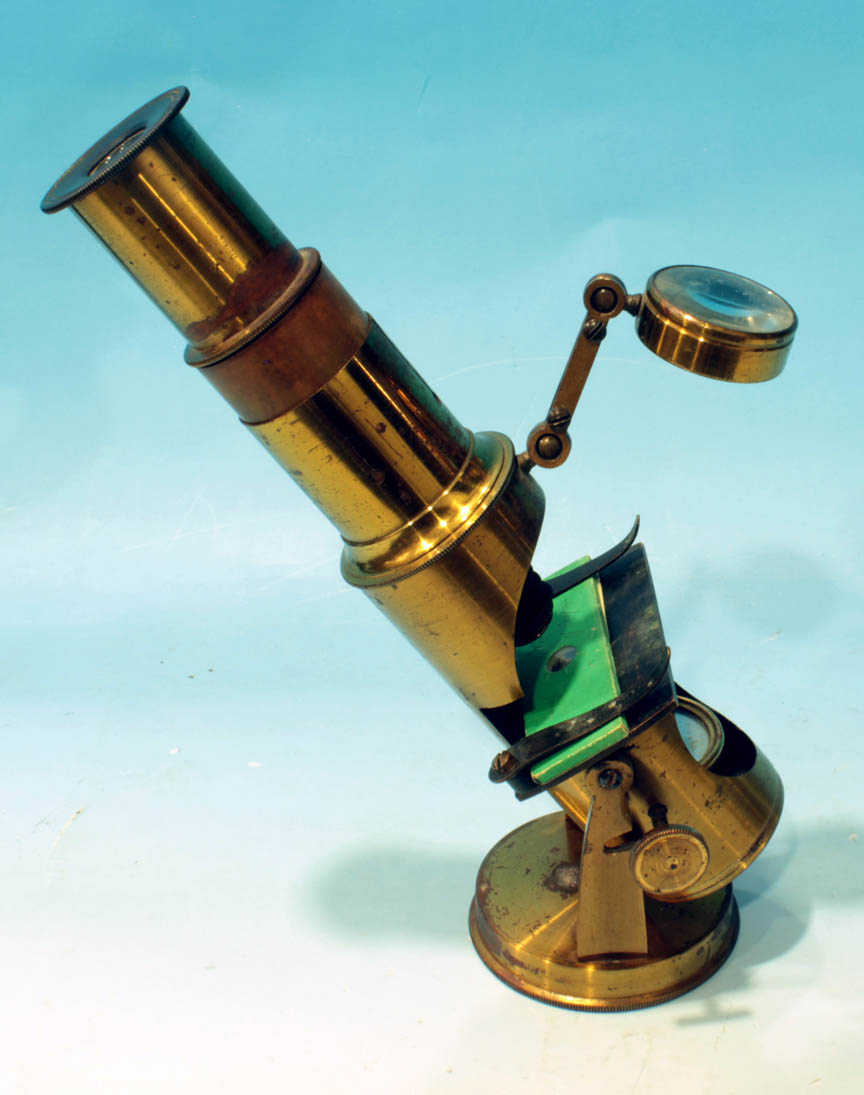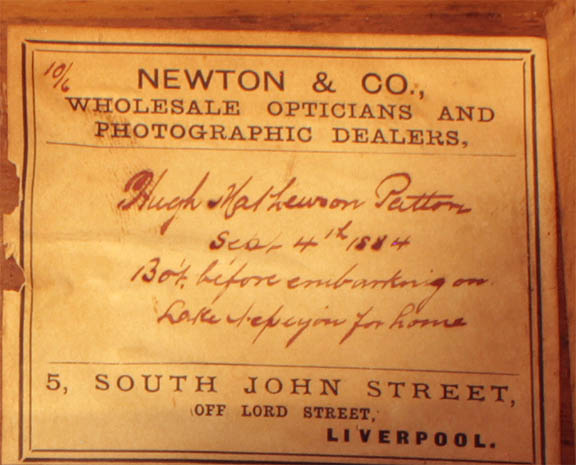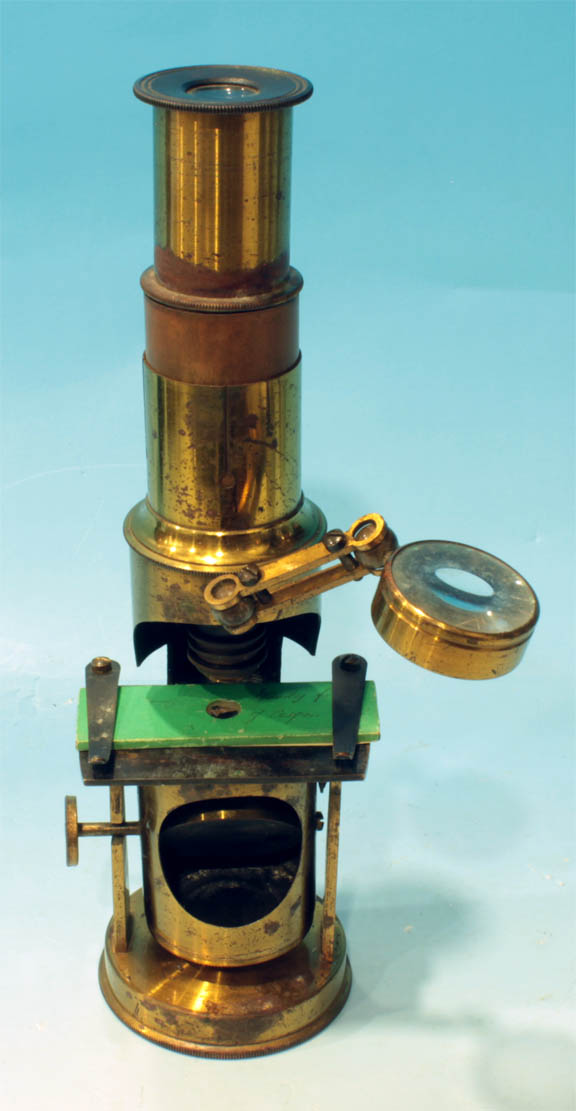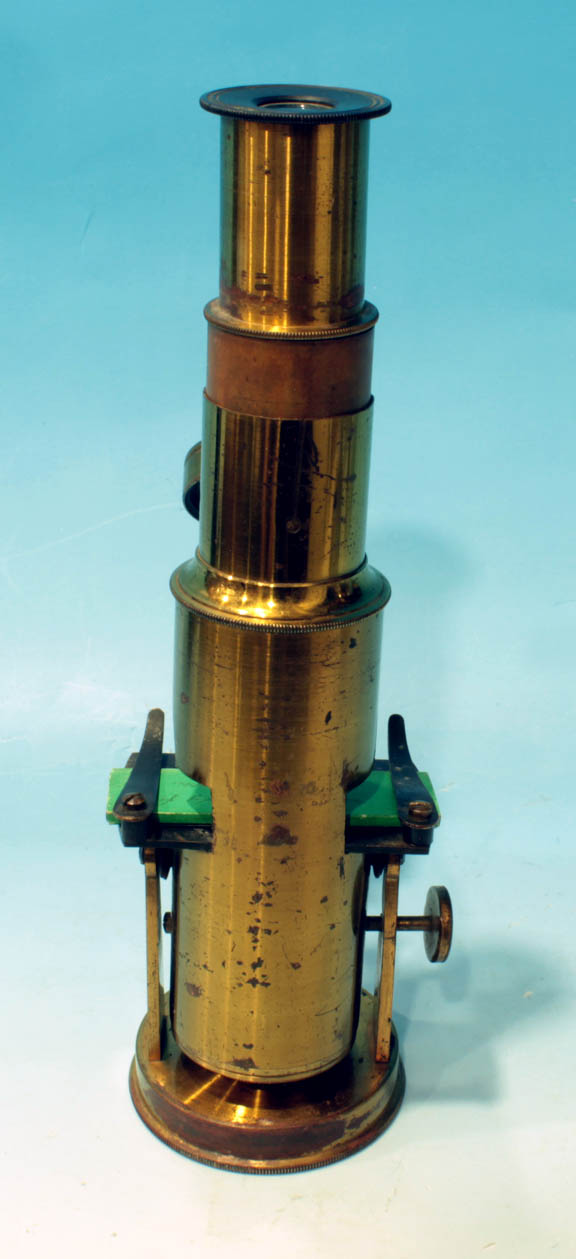Inclining Compound Drum Microscope
RETAILER: Newton & Co
c. 1884
Author: Barry Sobel
Editor: Joe Zeligs
DESCRIPTION:
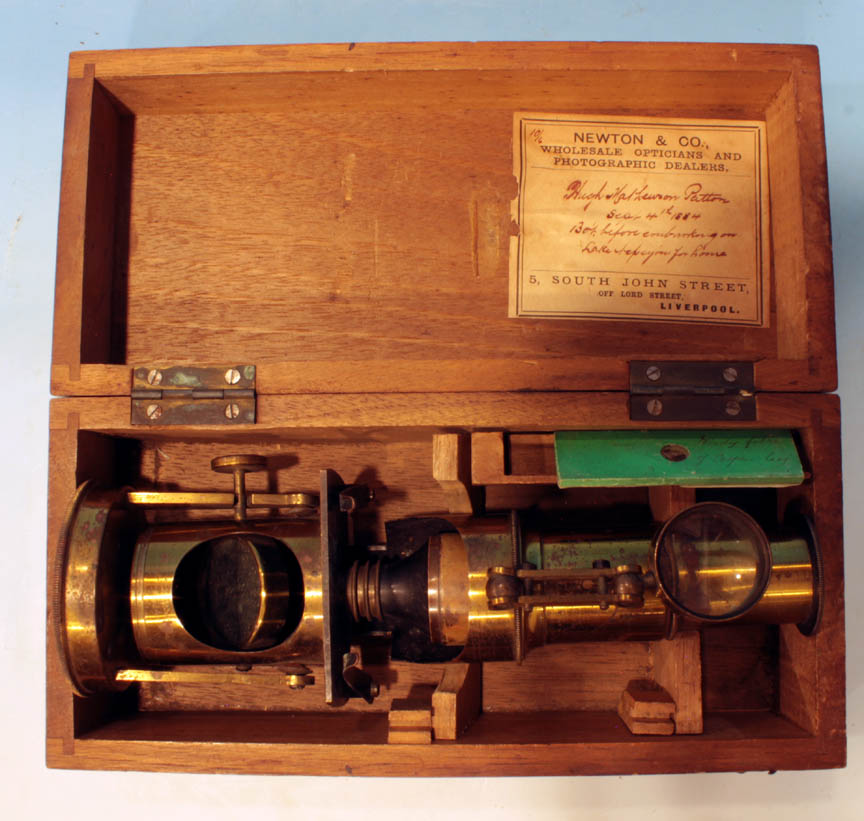
This is an inclining drum
or Martin-type
microscope dating to the 1880s. It features push-pull focusing and a divisible button objective. There are two blackened stage clips and an articulated bullseye condenser. It stores in a fitted wodden box. There is a compartment for slides and a fitting that would hold a tweezers (not present). It stands about 6 1/2 inches tall in a usable inclined position with slide focused. The round foot is filled with lead.
The retailer's label is affixed to the inside of the lid and is by NEWTON & CO., WHOLESALE OPTICIANS AND PHOTOGRAPHIC DEALERS, 5, SOUTH JOHN STREET, OFF LORD STREET,LIVERPOOL.
. At the top left corner of the label is the hand written 10/6
likely the price in shillings and pence. In the center of the label is a hand written note that seems to read: Hugh ? Lewson Patton, Sept 4th 1884, Box before embarking on Lake w/ ? for home
CONDITION:
The mechanical features work normally. There are scattered lacquer losses as seen in the images shown on this page. An adequate image of the specimen on the slide is formed when the instrument is properly set up.
HISTORY OF STUDENT OR CHILD DRUM MICROSCOPES and NEWTON & Co.:
This microscope was retailed by Newton & Co. Similar instruments were sold by various retailers. It is one of many different variants of student-child level instruments of this type sold from the 4th quarter of the 19th Century through the 1930s. Most of these were imported from France to both the English and American markets, though in the 20th century some were made in Germany, the latter sometimes having a black and chrome finish rather than the laquered brass finish this microscope has. The originating source in France of most of these is not known, since they never seem to have a maker's signature. They should not be confused with the higher quality drum microscopes of the major French makers such as Nachet, Hartnack, etc. For a discussion of this student type of instrument please the history section of the Toy Drum Microscope review page. For a discussion of the earlier drum microscopes intended for more serious work please see the page devoted to the history of those instruments.
The company that became Newton & Co. was formed in the 18th Century. In 1854 it was W.E. and F Newton at 3 Fleet Street, London. Newton & Co was formed about 1858 which continued as the name and address until after 1910. Some of the instruments were of their own make and they stated that they made instruments for the Admiralty. In 1911 they absorbed Alfred Apps business. The company sold microscopes, cameras, globes and especially projection equipment. By the 1880s they specialized in projection equipment, magic lanterns, and sold a large selection of lantern slides. Russel Wright was taken in as a partner and he became the sole proprietor in 1921. The firm still existed in the 1960s being associated with Vickers. Even though they made instruments, the microscope shown above on this page is most likely an import from France, which rapidly cornered the market for this type of instrument. The price of 10/6
is the price quoted in an undated Newton & Co catalog for a non-illustrated Compound microscope with one power, in box
; in the same catalog the cheapest Student
bar-limb achromatic microscope was priced at £4/4/0 so this may be the 10/6 microscope referred to there. The label in the lid of this microscope suggests a branch store in Liverpool.
